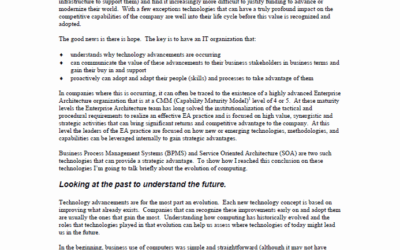CERN, the European Organization for Nuclear Research and the world’s largest particle physics laboratory located in the Franco–Swiss border near Geneva is most famous for employing the inventor of the World Wide Web, Tim Berners-Lee. Coined the “Web”, the intent was to create a platform for information sharing between scientists working in different universities and institutes all over the world.
Articles by: BPMInstitute.org
Collaborative Teams: a Work in Progress
So, you’ve read all the right books on lean, agile, and process improvement. You’ve drunk enough of the “quality” cool aid to believe that if everyone else “got it” things in your department or firm would be so much better; you can actually imagine how things could be faster, better and cheaper. If only others could see, taste and implement that same vision.
Data quality initiatives will boost your BPM project
Data quality is to the information society what quality of materials and products are to the production society. The quality of data in a business is a deciding competitive parameter, and this recognition is currently spreading among businesses throughout the world.
The technological development has generally, along with the development of ERP systems such as SAP, made it possible for businesses to produce, modify and disseminate enormous amounts of data. These data often form the basis for decision making, financial reporting and controlling liquidity, products, clients and suppliers.
RESTful Web Services Part II: Development and Testing
In my previous article, RESTful Web Services Part I, I introduced the key concepts behind REST and outlined an approach for designing RESTful web services. This article will cover implementing web services using Restlet and testing those web services using Apache JMeter.
Déjà Vu! From Project to Process Portfolio Management
The evolution of the BPM profession is leaving a strong impression of “Déjà vu”! Although less mature, the evolution of the Process Management discipline is comparable to that of the Project Management discipline.
BPM has the golden opportunity to develop more rapidly by leveraging the experience of its’ predecessor.
SOA and BPM – Taking the Enterprise to the Next Level
It is unfortunate but most companies find themselves always trying to catch up with technology advancements. Like many others they are burdened by a significant investment in legacy systems (and the infrastructure to support them) and find it increasingly more difficult to justify funding to advance or modernize their world.
Improving Process Capability across the Enterprise with Enterprise SPICE
Suppose you want/need to improve performance across your enterprise. As you pursue organizational excellence, there are many improvement models, standards, and approaches available. Each might help with part of the business, or address selected compliance requirements, but using several separately can be expensive, confusing, and ineffective. How can an enterprise reap the benefits of the knowledge in a bewildering variety of standards and models? How can this be done efficiently and effectively?
Organizing for Innovation
How should information be organized? Better yet, how should it be organized for innovation?
BPMS Watch: Bringing Method to the Madness
As BPM takes hold, organizations are finally beginning to acknowledge the need for a common language for process description, something that allows a broad base of users spanning departments, geographies – both business and IT – to look at a process diagram and understand what it says. And in BPMN, the business process modeling notation standard from OMG, we finally have near-unanimous acceptance from tools vendors of what that language looks like.
Version 1.x of the standard is supported by the majority of BPM Suite vendors as a front end to process implementation tools, as well
RESTful Web Services Part I: Concepts and Design
An increasing industry backlash to the mounting complexity of the WS-* SOAP specifications is resulting in many organizations considering RESTful Web Services. In fact, a recent poll by Information Week found that 58% of IT professionals believed that SOA introduced more complexity and resulted in cost overruns. Some industry pundits, such as Tim Bray echo this sentiment declaring WS-* an embarrassing failure.
So why turn to REST?





















